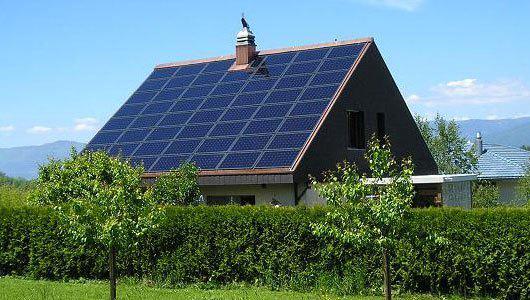For the first time, a team of Australian scientists have recently reproduced a synthetic photosynthesis that will take them closer to creating cheap and sustainable fuel from sunlight and water – the way plants do.
Creating Hydrogen Through Photosynthesis
By utilising the process of photosynthesis, plants turn water, sunlight and carbon dioxide into oxygen, and produce the energy to sustain their systems. Scientists around the world have been trying to duplicate photosynthesis in their effort to develop biological systems that can generate clean and cheap hydrogen fuel.
Today, they are close to achieving their objective. Scientists from the Australian National University in Canberra, Australia, were able to modify a naturally occurring protein which they used to capture energy from sunlight: synthetic photosynthesis.
This is the key step in the process of photosynthesis. “Water is abundant and so is sunlight,” said Kastoori Hingorani, lead researcher, ARC Centre of Excellence for Translational Photosynthesis. “It is an exciting prospect to use them to create hydrogen, and do it cheaply and safely,” he added.
In a related development, a cheap but abundant photosynthesis method of making hydrogen fuel from sunlight and water is also being developed by a team led by Jens Norskov, an SLAC National Accelerator Laboratory researcher at Stanford University in the United States.
The team of experimenters combined a light-absorbing electrode with a molybdenum sulfide catalyst to split water into its basic components.
Hydrogen fuel has very high energy which gives out water when burned. Conventional hydrogen production comes from natural gas resulting in massive carbon dioxide pollution. An alternative method of producing hydrogen is through photo-electrochemical (PEC) process water splitting.
When the sun rays hit the PEC cells, solar power is absorbed. This is used to split the water molecules into its two basic components, oxygen and hydrogen. However, this particular process requires a catalyst. The usual platinum catalyst used in the process is very expensive. A cheaper alternative must be developed to make the process viable.
In the process of their investigation, the team of Norskov were led to hydrogen-producing enzymes which are natural catalysts derived from certain organisms. Their research led them to related compounds, which finally brought them to molybdenum sulfide.
Meanwhile, the researchers at the Australian National University need to use ferritin, a naturally occurring protein, to create biological, water-splitting systems. Ferritin is powered by the sun and does not require batteries or expensive metals.
“This is the first time we have replicated the primary capture of energy from sunlight,” said Ron Pace, co-researcher in the ANU study. “It’s the beginning of a whole suite of possibilities, such as creating a highly efficient fuel, or to trapping atmospheric carbon,” he added.
“The carbon-free cycle is essentially indefinitely sustainable. Sunlight is extraordinarily abundant, water is everywhere – the raw materials we need to make the fuel. And at the end of the usage cycle it goes back to water,” concluded Pace. If this process of photosynthesis is really feasible, developing countries can adapt it because of its affordability.



